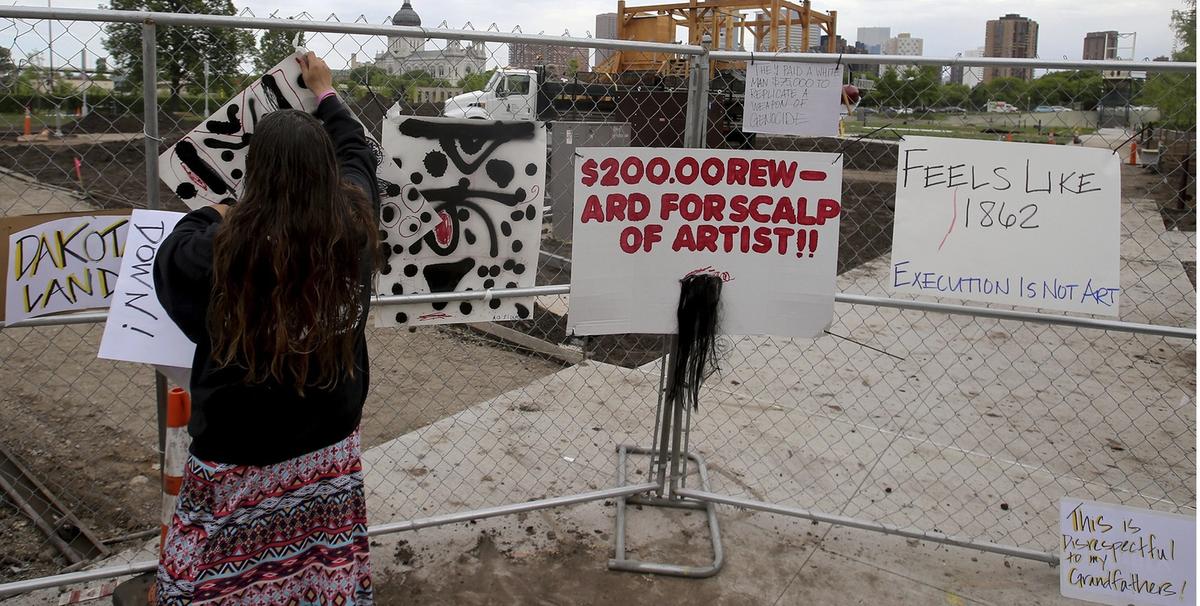The Walker Art Center has postponed the opening of the Minneapolis Sculpture Garden until 10 June following protests from Native American groups surrounding a work by the artist Sam Durant that references US state-sanctioned hangings. Among the historic gallows recreated in Durant’s wooden sculpture Scaffold (2012) is one used in 1862 to hang 38 Dakota men executed by the US Army in Mankato, Minnesota. The work will probably be dismantled after a meeting between the artist, the museum and Dakota elders on Wednesday.
Announced in January 2016 as one of the 16 new works acquired for the park’s reopening this June, Scaffold was originally commissioned and shown at Documenta in Kassel in 2012. “By referencing different historical executions, Durant’s sculpture points to broad range of socio-political topics, such as slavery, Native American and African American civil rights struggles, treason, anarchy and democratic values,” a press release says. “With the death penalty as its focus, Scaffold opens a discussion around criminal law and the politics of incarceration—themes which continue to resonate today.”
On Thursday 25 May, the Walker’s director Olga Viso wrote about the new acquisitions, including Scaffold on a blog post on the museum’s website. This prompted an outcry from Minnesota’s Native American community, over its use of a traumatic symbol of brutality against the Dakota people, the museum’s failure to consult tribal leaders in its acquisition and installation, and the fact that the work was made by a white artist. Signs posted on the fence surrounding the park said “Not your story” and “$200 for scalp of artist”. The work’s placement in a popular public art park, near Claes Oldenburg’s Pop icon Spoonbridge and Cherry, was also problematic. Graci Horne, a protester from the Sisseton Wahpeton Dakota/Hunkpapa Dakota tribe, told the Minneapolis Star Tribune on Monday: “We are continuing to hold space here and remain peaceful.”
Both Durant and Viso released statements apologising for the hurt caused to the community and offering the dismantle the piece. “It has been my belief that white artists need to address issues of white supremacy and its institutional manifestations. Whites created the concept of race and have used it to maintain dominance for centuries, whites must be involved in its dismantling,” Durant said. “However, your protests have shown me that I made a grave miscalculation in how my work can be received by those in a particular community.”
Viso said: “As director of the Walker, I regret that I did not better anticipate how the work would be received in Minnesota, especially by Native audiences. I should have engaged leaders in the Dakota and broader Native communities in advance of the work’s siting, and I apologize for any pain and disappointment that the sculpture might elicit.” She added that after seeing the work at Documenta, “I recognized its capacity to address the buried histories of violence in this country, in particular raising needed awareness among white audiences. I knew this could be a difficult artwork on many levels. This is invariably connected to national issues still embedded in the psyche of this country and its violent, colonialist past.”


